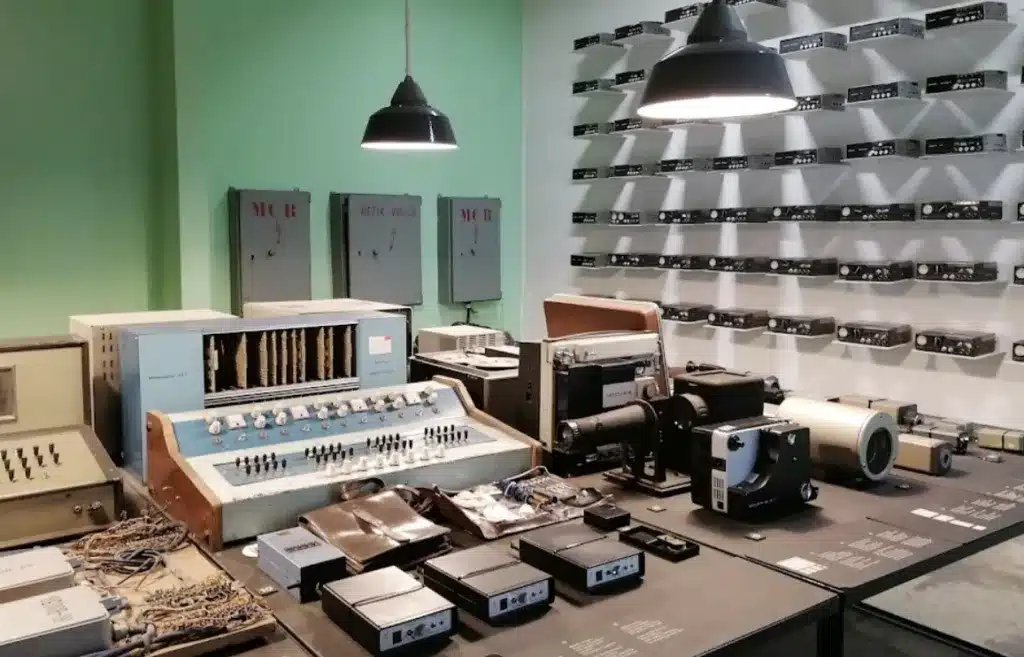Top 5 Best Museums in Tirana
Find the top 5 best museums in Tirana, Albania, ranked by their rating and popularity. See all information about the museum, including visitor information, exhibits and reviews.

By Dirk Pohlers, adventure traveller from Germany. I visit every place I write about & share real tips, photos, & advice from my trips.
Tirana boasts some of the most unusual museums: a huge bunker used by the communist government as shelter of last resort in a time of war has been turned into museum; a once infamous house covered with leaves that served as the one-time spy headquarter from which hundreds of thousands of Albanians were persecuted during the dictatorship.
Table Of Contents
Tirana Museums
Booking.com
Find your dream hotel
Travelers will find the best hotel deals in Tirana by booking online on Booking.com. I recommend using the map feature to find the best places to stay.
Booking.comViator
Plan your entertainment
Use Viator to plan ahead and lock in those must-see experiences & tours in and around town.
ViatorDiscover Cars
Rent a car
I recommend using DiscoverCars to compare rates for different vehicles across dealerships.
Discover CarsThe best museums in Tirana, Albania
Are you looking for museums in Tirana? These are the best:
Bunk’Art 2

- Location: Bunk’Art 2
Bunk’Art 2 is a museum located near the Ministry of the Interior in Tirana, Albania. This location is easily accessible and offers a unique insight into the country’s history during the Cold War. The museum’s proximity to the Ministry of the Interior gives it added historical significance, as it was an important institution during the period the museum explores.
Bunk’Art 2 covers an area of 1,000 square metres and consists of 40 rooms. Each room presents a different aspect of Albania’s history from 1912 to 1991, featuring artefacts from the state archives and the interior ministry. This comprehensive coverage of almost a century of history makes the museum a rich source of information for anyone interested in Albania’s past.
- Rating: 4,3/5
- Admission: 500 Lek (about €5)
- Opening Hours: Daily 9:30am – 4:30pm
- Website: https://bunkart.al/1/home
National Historical Museum

- Location: National Historical Museum
The National Historical Museum (Muzeu Historik Kombëtar) in Tirana, the capital of Albania, is the largest museum in the country. It was opened on 28 October 1981 and is located on the central Skanderbeg Square in the northwestern part of the city. The main façade of the museum is dominated by a large mosaic.
The museum is divided into different pavilions: The ages of Antiquity, Middle Ages, Renaissance, Independence, Iconography, National Liberation & Anti-fascism War, Communist Terror, and Mother Teresa. The Pavilion of Communist Terror hosts images, documents, and videos of the persecution suffered by the Albanians during the regime of Enver Hoxha.
- Opening Hours: currently closed for renovation
- Website: http://www.mhk.gov.al/
House of Leaves – The Museum of Secret Surveillance

The Museum of Secret Surveillance, also known as the House of Leaves, is a historical museum in the heart of Tirana, Albania. It was opened on 23 May 2017 in a building used as the headquarters of the Sigurimi, the Albanian secret police, during the communist era. The museum is dedicated to the innocent people who were spied on, arrested, persecuted, convicted and executed during the communist regime.
The House of Leaves is one of the more unusual museums in Albania. It is considered to be the equivalent of the Stasi headquarters of the former East Germany. The leaves have a double meaning: things hidden in woods, but also the leaves of books and files on people.
- Rating: 4,1/5
- Admission: 700 ALL (about €7)
- Opening Hours: Daily 9am – 5pm
- Website: https://muzeugjethi.gov.al/
Bunk’Art 1

- Location: Bunk’Art 1 Tirana
Bunk’Art 1 is a unique museum in Tirana, the capital of Albania. It is housed in an anti-nuclear bunker originally built by President Enver Hoxha during the socialist regime in Albania. This historic site offers a glimpse into the country’s past and the political climate at the time.
The bunker, located in Shish Tufinë, was first opened to the public in November 2014. Since then, it has become a popular destination for tourists and locals alike who are keen to learn more about the history of Albania.
Exhibits at Bunk’Art 1
The museum contains some original objects from the bunker, giving visitors a tangible connection to the past. Descriptions of how the bunker worked are also available, providing insights into the purpose and functioning of this unique structure.
- Rating: 4,1/5
- Opening Hours: Daily 9:30am – 4:30pm
- Website: https://bunkart.al/1/home
Museum of Natural Sciences Tirana

One of the most exceptional museums you should visit in Albania is the Museum of Natural Sciences. The museum has an extraordinary collection of the country’s rich biodiversity. Over 3,000 specimens (exponents) are exhibited at the Museum of Natural Sciences and there is a scientific fund with over 100,000 specimens of Albanian fauna.
The Museum of Natural Sciences “Sabiha Kasimati” (MSHN) was established in 1948 as part of the former Institute of Sciences. In 2010, together with the National Herbarium and the Botanical Garden, it became part of the Flora and Fauna Research Centre of the Faculty of Natural Sciences.
- Opening hours: daily 9am – 3pm

The Mediterranean is one of the wealthiest fauna areas in the world, and Albania has been an oasis of rare species carefully collected by Albanian researchers, especially during the communist period. Currently, Albania has 30% of the fauna in all of Europe. While Albania has lost more of its fauna than any other European country due to demographic changes, erosion, deforestation, uncontrolled land use, fishing, illegal hunting, efforts are now made to protect areas like the Vjosa river.

